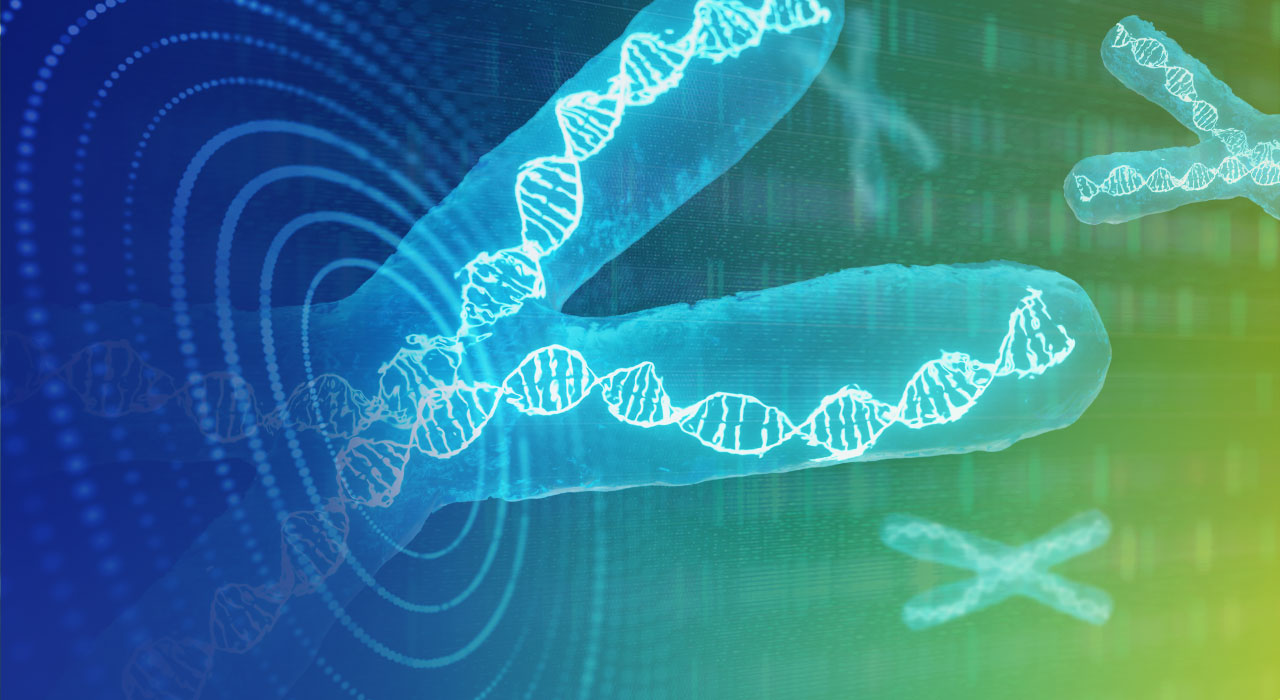Blog

The Synergy of Pharmacogenomics and Pharmacokinetics in Drug Development: Unraveling the Code for Precision Medicine
Personalized MedicineWritten by Julie Bick, Ph.D.
Introduction
In the highly complex field of drug development, the coupling of pharmacogenomic and pharmacokinetic analysis is becoming a powerful tool in the advancement of personalized medicine. As researchers look deeper into individual genetic variations and their impact on drug response, the promise of tailoring treatments to an individual's unique genetic makeup is at last becoming a reality. This blog explores the synergy between pharmacogenomics and pharmacokinetics and sheds light on how these two distinct profiles are together reshaping the process of drug development (Yehya, 2021).
Understanding the Roles of Pharmacogenomics and Pharmacokinetics in Drug Development
Pharmacogenomics is a field at the nexus of genetics and pharmacology, that enables researchers to unravel the genetic determinants that influence an individual's response to certain drugs. The human genome is composed of approximately 3 billion base-pairs of DNA, that encode around 20,5000 genes. Within these genes, there are thousands of DNA variations that can significantly impact drug absorption, metabolism, efficacy, and toxicity. These genetic variations, known as polymorphisms, can occur in genes encoding drug-metabolizing enzymes, drug transporters, and drug receptors, among others. In the context of drug development, pharmacogenomics provides a roadmap for identifying genetic factors that contribute to inter-individual variability in drug response. This knowledge serves as a foundation for the development of personalized treatment regimens that optimize therapeutic outcomes while minimizing adverse effects (Sosnay and Cutting, 2014; Ganguly et. al. 2001).
Pharmacokinetics, on the other hand, involves the study of how the body processes drugs. It encompasses the absorption, distribution, metabolism, and excretion (ADME) of drugs, collectively describing their concentration and temporal profiles throughout the body. Understanding a drug's pharmacokinetic profile is crucial for determining the optimal dosage regimen and ensuring therapeutic efficacy and has been the cornerstone for pre-clinical toxicology studies for some time. By characterizing how a drug is absorbed, distributed, metabolized, and eliminated, researchers can optimize dosing protocols (dose and timing), predict potential drug interactions, and thereby enhance the overall therapeutic performance of the drug (Chow et. al. 2014).
The Synergies of Pharmacogenomics and Pharmacokinetics
Multi-gene pharmacogenomics provides a comprehensive understanding of how individual genetic variations influence drug metabolism. This knowledge enables researchers to tailor pharmacokinetic studies, focusing on specific enzymes or transporters that are genetically variable among different populations. By incorporating these genomic insights into study design, drug developers can streamline the identification of optimal drug doses and minimize the risk of adverse events, ultimately expediting the drug development process (Roots et. al. 2007).
Pharmacokinetic studies, when coupled with pharmacogenomic analyses, reveal a more nuanced understanding of the factors influencing drug disposition. For instance, the activity of drug-metabolizing enzymes such as cytochrome P450s can be influenced by various genetic polymorphisms. Pharmacokinetic studies in different populations can elucidate the prevalence of these polymorphisms, guiding the development of region-specific dosing recommendations to account for inter-individual variability (Pinto and MJCdm, 2011).
One of the most powerful applications of combined pharmacogenomic and pharmacokinetic-driven studies is in the prediction of Adverse Drug Reactions (ADRs). ADRs are a significant concern in both drug development and real-world clinical practice. Pharmacogenomics allows for the identification of individuals at higher risk of ADRs based on their genetic makeup. By integrating pharmacogenomic data into pharmacokinetic studies, researchers can anticipate and mitigate the occurrence of ADRs. This proactive approach to drug development aligns with the principles of personalized medicine, ensuring that treatments are not only effective but also safe for specific patient populations.
The ultimate goal of combining pharmacogenomics and pharmacokinetics is the realization of precision medicine—tailoring drug therapies to the individual patient. Pharmacokinetic studies, guided by pharmacogenomic insights, enable the development of dosing protocols that account for genetic variability in drug metabolism and response. This approach holds the promise of maximizing therapeutic benefits while minimizing the risk of toxicity and enabling clinicians to provide precision medicine to their patients.
Bridging the Gender Gap in Toxicology
Toxicology studies have traditionally faced challenges in addressing gender-specific differences in drug responses, with a historical bias toward male subjects. Through recognizing the importance of understanding how drugs impact both women and men differently, pharmacogenomics and pharmacokinetics have emerged as powerful tools to bridge this gender gap in toxicology studies and more comprehensively characterize gender-specific drug responses. This has significant implications for drug safety, since women often experience different pharmacokinetic profiles, metabolic pathways, and susceptibility to adverse drug reactions compared to men. Beyond genetic differences, hormonal fluctuations in women can also influence drug metabolism, and since these hormone levels change significantly over the course of a woman's life, studies into these effects are complex. Pharmacogenomic and pharmacokinetic investigations can demonstrate on how hormonal variations, such as those associated with the menstrual cycle or pregnancy, affect drug response. Beyond hormones, differences in body composition, organ size, and blood flow can have a major influence drug absorption and distribution.
Understanding these dynamics allows for the development of tailored toxicology studies that capture a more complete spectrum of gender-specific responses. Pharmacokinetic studies that consider gender-specific factors are providing a foundation for toxicology studies that accurately reflect how drugs behave and are metabolized and eliminated from the bodies of both women and men. Examples of medications that have been shown to require gender-specific considerations include certain cardiac medications that regulate the QT interval (Kalibala et. al. 2020) and nonsteroidal anti-inflammatory drugs (NSAIDs) (Farouh et. al. 2021).
Challenges and Opportunities
While the synergy between pharmacogenomics and pharmacokinetics holds immense promise, it is not without its challenges. As we have discussed in previous blogs, implementing personalized medicine on a large scale requires overcoming technical, ethical, and regulatory hurdles. In addition, the heterogeneity of genetic backgrounds and the complexity of drug interactions necessitate robust study designs, global studies and comprehensive data analysis methods (Hong et. al. 2020).
The integration of pharmacogenomic data into pharmacokinetic studies requires sophisticated technologies and analytical tools. Bioinformatics, and systems biology approaches are essential for extracting meaningful insights from the vast amount of genetic information generated. Overcoming these technical challenges is crucial for harnessing the full potential of pharmacogenomics in drug development. Organizations such as The Pharmacogenetics Implementation Consortium (CPIC), Dutch Pharmacogenetics Working Group (DPWG) and Pharmacogenomics Knowledge Base (PharmGKB) are helping to integrate pharmacogenomics into mainstream clinical practices through the publishing of data-driven guidelines.
The use of genetic information in drug development also raises ethical concerns related to privacy, consent, and potential stigmatization. Clear guidelines for obtaining informed consent and ensuring the responsible use of genetic data are paramount, and addressing these ethical considerations is vital for fostering trust among study participants and the broader public.
In addition, as personalized medicine advances, regulatory frameworks must adapt to accommodate the dynamic interplay between pharmacogenomics and pharmacokinetics. Regulators play a pivotal role in ensuring that the evidence supporting personalized medicine approaches meets rigorous standards. Collaborative efforts between regulatory bodies, researchers, and industry stakeholders are essential for establishing a robust framework that facilitates the integration of pharmacogenomic information into drug development and clinical practice.
Real-World Case Studies
To illustrate the real-world impact of integrating pharmacogenomics and pharmacokinetics, several case studies are described below:
Warfarin Dosing Optimization
The anticoagulant warfarin provides a compelling example of how pharmacogenomics and pharmacokinetics intersect. Genetic variations in both the CYP2C9 and VKORC1 genes influence warfarin metabolism and sensitivity. Pharmacokinetic studies incorporating genetic data have led to the development of genotype-guided dosing algorithms, improving the safety and efficacy of warfarin therapy (Kamali and Wynne, 2010; Lee and Klein, 2013; Wadelius and Pirmohamed, 2007)
Clopidogrel and CYP2C19 Variants
Clopidogrel, an antiplatelet drug, is metabolized by the enzyme CYP2C19. Genetic polymorphisms in CYP2C19 can result in reduced drug metabolism, leading to diminished therapeutic effects. Pharmacokinetic studies in different populations have elucidated the prevalence of these variants, prompting personalized dosing recommendations to optimize the antiplatelet effects of clopidogrel (Frere et. al. 2009).
Codeine and CYP2D6 Phenotypes
Codeine, a prodrug, requires conversion to its active form by the enzyme CYP2D6. Genetic polymorphisms in CYP2D6 can result in variable drug metabolism, leading to differences in pain relief and the risk of toxicity. Pharmacogenomic insights have influenced dosing recommendations for codeine, highlighting the importance of tailoring treatment based on individual genetic profiles (Gasche et. al. 2004).
Future Directions and Conclusion
The integration of pharmacogenomics and pharmacokinetics represents a paradigm shift in drug development—one that holds the promise of delivering safer, more effective, and personalized therapies. As technology continues to advance, it is enabling more cost-effective and scalable genomic analyses, and this is helping to break down the barriers to implementing personalized medicine. Prospective research endeavors should focus on expanding our understanding of the genetic determinants of drug response and refining the methodologies for incorporating pharmacogenomic data into pharmacokinetic studies. Collaborative efforts among researchers, clinicians, regulators, and industry stakeholders are essential for realizing the full potential of this synergy.
The combination of pharmacogenomics and pharmacokinetics is transforming approaches in drug development and paving the way for more accessible personalized medicine. The insights learned from profiling the genetic and metabolic foundations of drug responses are empowering researchers and clinicians to optimize therapeutic approaches, the risk of adverse drug events, and formulate treatments that are as unique as the individuals they aim to help. As we continue to resolve the code of pharmacogenomics and pharmacokinetics, we can look towards a future where precision medicine is not just a possibility but a cost-effective reality that is transforming the way we approach healthcare on an individual level.
References
- Yehya, A. (2021) Interplay between pharmacokinetics and pharmacogenomics. Chapter from Dosage Forms- Innovation and Future Perspectives. Edited by Usama Ahmad.
- Sosnay PR, Cutting GR. Interpretation of genetic variants. Thorax. 2014;69(3):295-297
- Ganguly NK, Bano R, Seth SD. Human genome project: Pharmacogenomics and drug development. Indian Journal of Experimental Biology. 2001;39(10):955-961
- Chow AT, Earp JC, Gupta M, et al. Utility of population pharmacokinetic modeling in the assessment of therapeutic protein-drug interactions. Journal of Clinical Pharmacology. 2014;54(5):593-601
- Roots I, Laschinski G, Arjomand-Nahad F, et al. Genotype and phenotype relationship in drug metabolism. Ernst Schering Research Foundation Workshop. 2007;59:81-100
- Pinto N, MJCdm ED. Clinically relevant genetic variations in drug metabolizing enzymes. Current Drug Metabolism. 2011;12(5):487-497
- Kalibala J, Pechère-Bertschi A, Desmeules J. Gender Differences in Cardiovascular Pharmacotherapy-the Example of Hypertension: A Mini Review. Front Pharmacol. 2020 May 6;11:564. doi: 10.3389/fphar.2020.00564. PMID: 32435193; PMCID: PMC7218117.
- Farkouh A, Baumgärtel C, Gottardi R, Hemetsberger M, Czejka M, Kautzky-Willer A. Sex-Related Differences in Drugs with Anti-Inflammatory Properties. J Clin Med. 2021 Apr 1;10(7):1441. doi: 10.3390/jcm10071441. PMID: 33916167; PMCID: PMC8037587.
- Hong JY, Kim JH. PG-path: Modeling and personalizing pharmacogenomics-based pathways. PLoS One. 2020 May 4;15(5):e0230950. doi: 10.1371/journal.pone.0230950. PMID: 32365122; PMCID: PMC7197763.
- Kamali F, Wynne H. Pharmacogenetics of warfarin. Annual Review of Medicine. 2010;61:63-75
- Lee MTM, Klein TE. Pharmacogenetics of warfarin: Challenges and opportunities. Journal of Human Genetics. 2013;58(6):334-338
- Wadelius M, Pirmohamed M. Pharmacogenetics of warfarin: Current status and future challenges. The Pharmacogenomics Journal. 2007;7(2):99-111
- Gasche Y, Daali Y, Fathi M, et al. Codeine intoxication associated with ultrarapid CYP2D6 metabolism. N Engl J Med 2004;351:2827-31.
- Frere C, Cuisset T, Gaborit B, et al. The CYP2C19*17 allele is associated with better platelet response to clopidogrel in patients admitted for non-ST acute coronary syndrome. J Thromb Haemost 2009;7:1409-11

